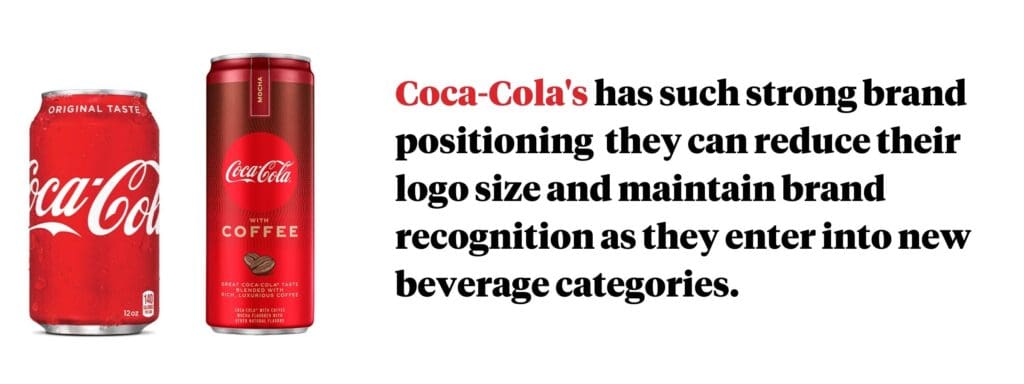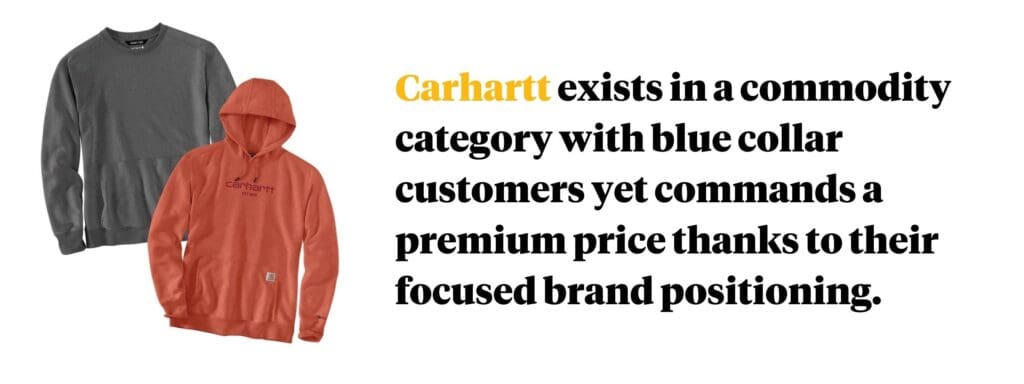How do brands become household names? For example, when some people sneeze, they don’t ask for a tissue; they ask for a Kleenex. There’s no such thing as “a Kleenex.” Kleenex is a brand name. But the company has positioned itself so well that its brand has become synonymous with the product.
Brand positioning is key to differentiate your business from the competition. Studies have shown that consistent brand positioning can increase your average revenue by 33%. So, what’s the key to effective brand positioning? Let’s look at the basics so you can build your brand into an iconic household name.
What Is Brand Positioning?
Brand positioning is how your company sets itself apart from the competition. It’s more than just a good logo or slogan; it’s customers’ perception of your brand. You want your brand to be seen as favorable, different, and credible. Brands create unique positioning during the brand audit phase of the development process.
Read More: A How-To Guide For Brand Repositioning.
Examples of Successful Brand Positioning
Think about the marketing greats like Nike, Coca-Cola, and Geico. All you need to see is the red can with white Spencerian script font, and you imagine a delicious, refreshing, carbonated beverage. Coke’s brand positioning is so consistent and positive that you don’t need to see a logo to know what brand it is. A certain flavored tortilla chip brand released a commercial without mentioning the product, logo, or company name! They relied entirely on their iconic brand positioning to get the message across.

What is a Brand Positioning Statement?
A brand positioning statement is a decision made by the company about how its product will uniquely meet the needs of its consumers in a way other brands won’t. Brand positioning is carving out a niche within a category and establishing your brand as the obvious choice for this target audience.
Why Should You Care?
Think of your brand‘s reputation as a raft adrift at sea. If you don’t guide the raft, it will float wherever the ocean takes it, even if that’s not where you want to be. Brand positioning is like a rudder. It’s how you guide your brand raft (reputation) where you want it to go.
You can use your brand positioning to communicate your product’s value, boost brand awareness, or justify your pricing. No matter how you use it, brand positioning can majorly impact your bottom line.
4 Ways to Create a Winning Brand Positioning Strategy
First, you must understand what makes your brand unique and how you want it to fit within the marketplace. To do that, create a brand positioning statement.
Create your positioning statement as a brief thought (no longer than a paragraph) explaining how you want to influence consumer perception of your brand. Take into consideration everything that could affect your company’s reputation:
- Who is your target market?
- What category does your product or service fall into?
- How does your product or service meet the needs of your customers?
- What is the brand messaging for your existing products?
- Do you currently have brand resonance existing in the customer’s mind?
- What makes your product or service different from the customer‘s perspective?
- Why should customers believe your brand‘s claims?
Once you find answers to these questions, you can create a powerful brand positioning statement to guide your positioning strategy.
There are four fundamental ways to build an effective brand positioning strategy:

1. Think About Your Product’s Characteristics
These characteristics-that customers love are a great basis for a positioning strategy.
For example, think about the automotive industry. Toyota’s brand position is all about reliability. You know their vehicles will run forever with limited maintenance. Other car manufacturers position their brands around other product characteristics. Porsche is all about performance, while Volvo is dedicated to safety.
Before building a positioning strategy around a product characteristic, ensure your product lives up to its claims. If you position your vehicle brand around reliability and people know your cars for breaking down, it will hurt your reputation worse than if you left your brand raft adrift without a rudder.
2. Position Your Brand Around Price
Consumers look for ways to save cash. If your products offer a unique way of saving money, focus on brand value as a competitive advantage.
You can see this brand positioning at work with big-box department stores. Why do you shop at Walmart? It says it right in its slogan: “Save Money. Live Better.” Walmart has positioned its brand around having the best prices around. When you enter the store, you feel confident that you’re getting the lowest prices available, a reputation they’ve worked hard to achieve.
3. Consider Luxury or Quality
You can also position your brand around the quality or luxury of your products. Customers who perceive your product as high quality will be willing to pay more for it.
Why would anyone pay $2,500 for a Louis Vuitton purse when they can go to Walmart for a $20 bag that works just as well? Because Louis Vuitton has positioned its brand messaging around luxury. Customers feel it’s worth paying the price of luxury to own a Louis Vuitton purse.
Similarly, Carhartt outerwear is more expensive than generic jackets and sweatshirts, but they’ve positioned themselves well by aligning their brand voice around quality and durability. Their brand positioning in a flooded commodity category is why they continue to have record sales despite the higher price tag.

4. Brand Positioning Based on Competition
If you offer something unique to that of your competitors, flaunt it as a part of your branding strategy. This is called whitespace and Will make your brand seem attractive compared to your competitors.
You can see this CPG brand strategy everywhere, and whitespace positioning should be what every brand aims for. Let’s look at an example of this with health food MCT oils. Simply reading Amazon reviews and creating patterns, we noticed consumers complaining about all the competitor‘s bottles leaking and dripping after using them. We create a brand with a spill-proof top and positioning around that product-level white space. It’s an instant success selling millions on Amazon by doing something different from other competitors.
Be Consistent with Your Brand Positioning
Consistency is key. It takes five to seven brand impressions before you stick in the consumer’s mind. You don’t want to confuse potential customers about your brand essence by putting out inconsistent messages that target any and everyone.
Once you’ve created a brand positioning strategy, stick with it. It should influence every aspect of your marketing strategy, from your logo and slogan to advertisements and packaging. The more consistent your brand positioning, the faster it’ll take hold in the minds of consumers.
Brand Positioning in Packaging Design
While most know us SmashBrand for packaging design and consumer testing, much of our client work is helping to determine the target customer and creating packaging that aligns the potential customer persona with the intended brand perception.
As your brand positioning agency, our package design testing process will create a strong brand image and a brand positioning framework you can use across your entire product line. Book a time to discuss your project with our team.
Subscribe to
Nice Package.
A monthly newsletter that unpacks a critical topic in the FMCG & CPG industry.
Free Resource.

CPG product repositioning guide.
Explore the five undeniable signs your CPG product needs repositioning along with strategies for leveraging consumer insights for a guaranteed market lift.
Learn More About CPG product repositioning guide.